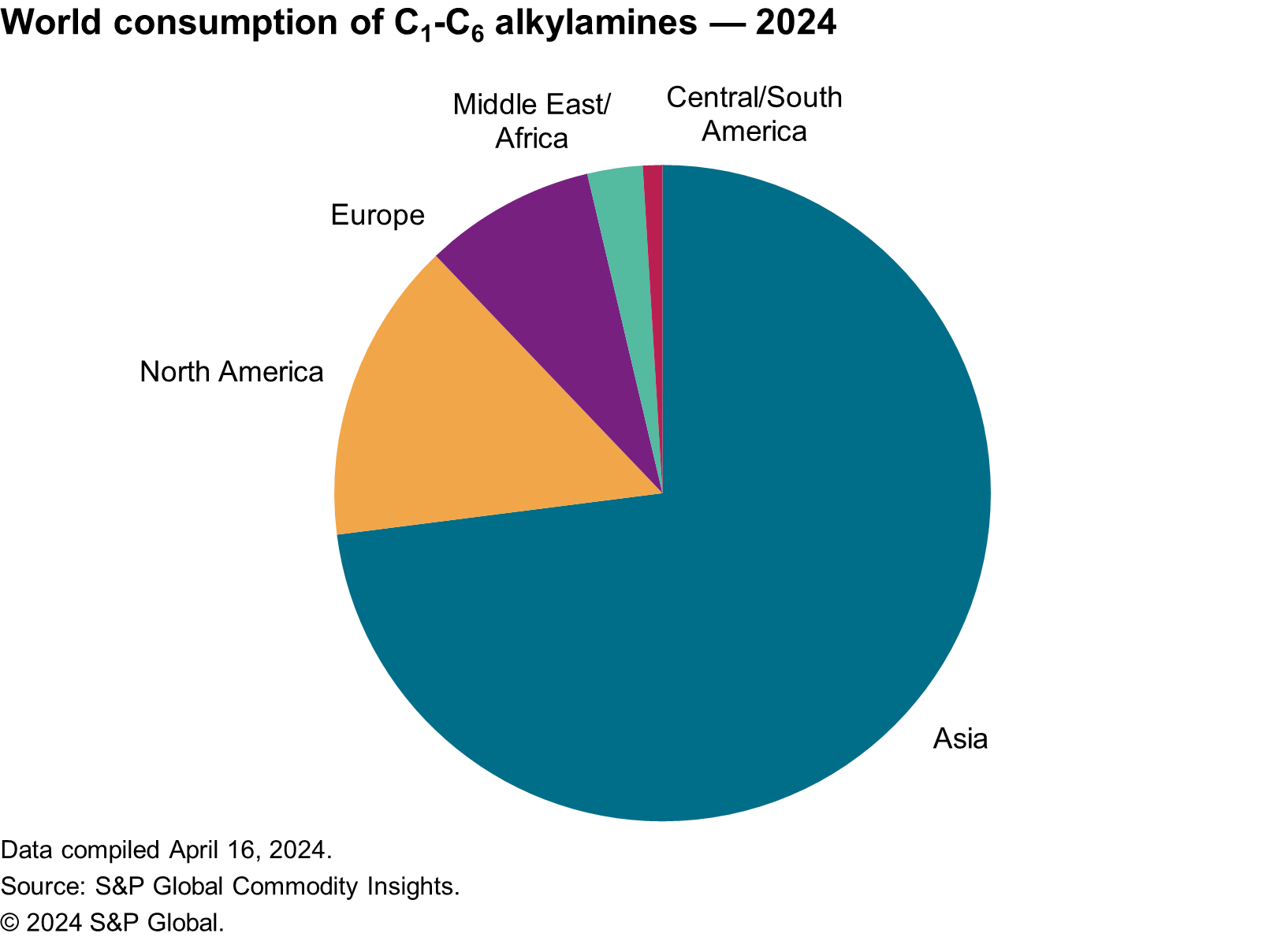Published May 2024
Amines are a versatile class of compounds used in organic synthesis. There are heterocyclic, aromatic, and specialty amines. The C1-C6 alkyl monoamines (RNH2, R2NH, R3N) discussed in this report include mainly methylamines (C1), ethylamines (C2), n- and isopropylamines (C3), n- and isobutylamines (C4), and cyclohexylamines (C6). Each individual C1-C6 alkylamine has its own set of applications, with the largest applications including the manufacture of solvents, pesticides, feed additives, rubber-processing chemicals, and water treatment chemicals
Global consumption of C1-C6 alkyl monoamines will continue to grow at an average rate of 3.8% per year during 2024–29, driven primarily by the developing market in Asia, particularly in mainland China and India. Demand for alkylamines will vary by product and region, driven by the development of various industries, including solvents, pesticides, feed additives, rubber processing chemicals, water treatment chemicals, pharmaceuticals and electronics.
The following pie chart shows world consumption of C1-C6 alkylamines in 2024:

For more detailed information, see the table of contents, shown below.
S&P Global’s Chemical Economics Handbook – Alkylamines (C1-C6) is the comprehensive and trusted guide for anyone seeking information on this industry. This latest report details global and regional information, including

Key benefits
S&P Global’s Chemical Economics Handbook – Alkylamines (C1-C6) has been compiled using primary interviews with key suppliers and organizations, and leading representatives from the industry in combination with S&P Global’s unparalleled access to upstream and downstream market intelligence and expert insights into industry dynamics, trade, and economics.
This report can help you
- Identify trends and driving forces influencing chemical markets
- Forecast and plan for future demand
- Understand the impact of competing materials
- Identify and evaluate potential customers and competitors
- Evaluate producers
- Track changing prices and trade movements
- Analyze the impact of feedstocks, regulations, and other factors on chemical profitability


















